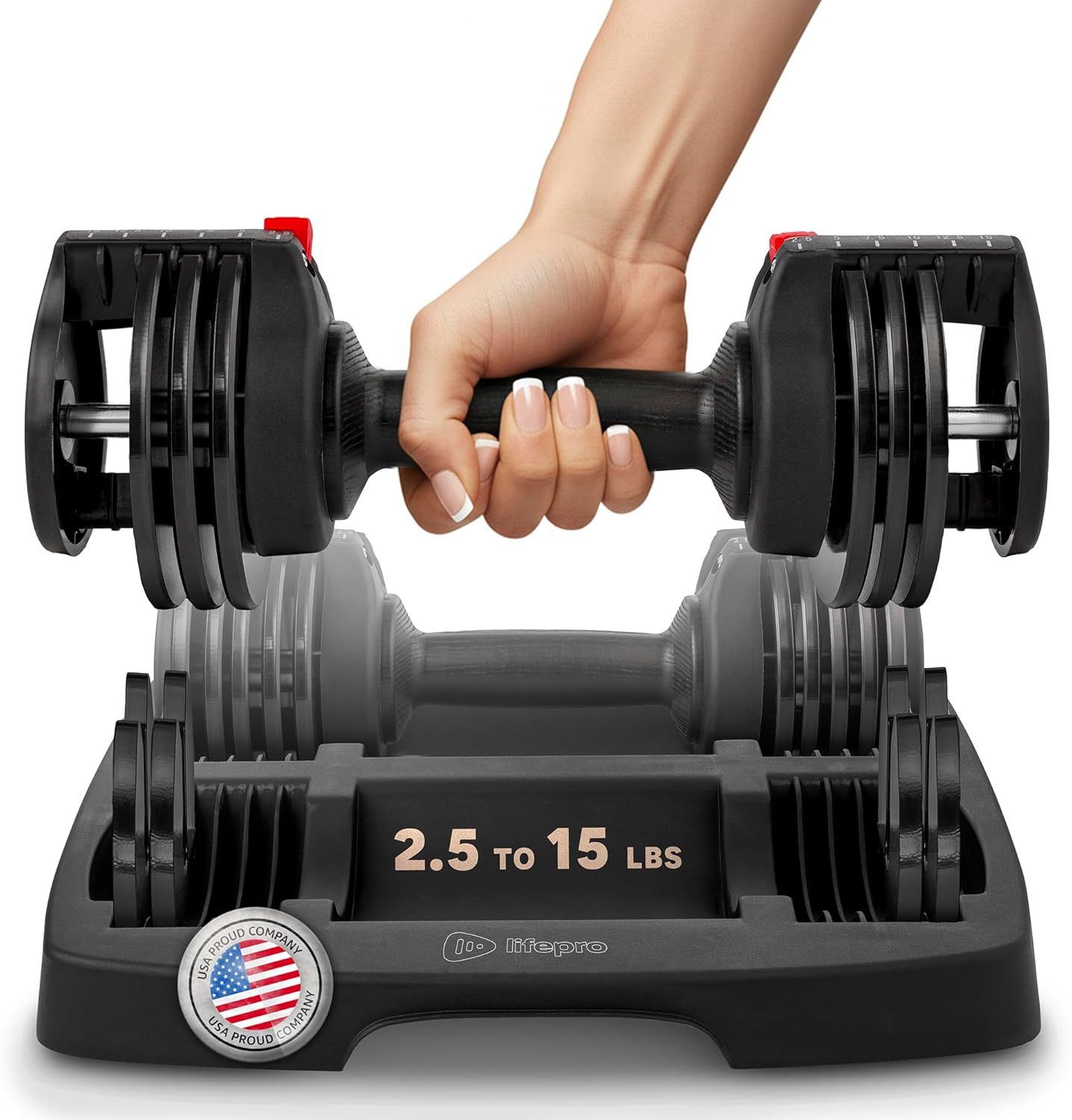
Let’s be honest. It’s that nagging voice that kicks in around 4 PM on a Sunday.
The “I should have gone to the gym” guilt. The “I’ll start fresh on Monday” promise that dissolves by Tuesday afternoon. In our crazy-busy world, the idea of exercising 30 minutes a day, five days a week, can feel less like a healthy goal and more like an impossible standard designed to make us feel bad.
This “all-or-nothing” mindset usually leads to… well, nothing.
But what about that other approach? The “Weekend Warrior”—the person who crams all their physical activity into one or two monster sessions on Saturday and Sunday?
For decades, we’ve been told this is a compromise. That it’s “better than nothing,” but not really the right way to do it.
Well, a wave of new, high-quality scientific evidence is here to completely rewrite that script. It turns out the Weekend Warrior isn’t just making a decent compromise. They might be onto one of the most practical and powerful longevity secrets out there.
And the “one thing” they do to unlock these life-extending benefits? It’s not a special exercise. It’s not a magic supplement.
It’s simply this: They hit their total weekly volume of exercise.
That’s it. The big secret is that for the most important health outcomes, like living a longer life, your body doesn’t seem to care how you schedule your workouts. It just cares that you did them. This isn’t just “better than nothing.” It might just be enough.
So, What’s the “Magic Number” We’re All Chasing?

Before we get to the proof, let’s define the target. When we say “hitting the volume,” what does that mean?
The number comes directly from global health guidelines, like those from the American Heart Association (AHA). The goal is:
- 150 minutes per week of moderate-intensity aerobic activity.
- In simple terms: Brisk walking, light cycling, or anything where you can talk, but you couldn’t sing a song.
- OR 75 minutes per week of vigorous-intensity aerobic activity.
- In simple terms: Running, swimming laps, or a HIIT class where you can’t say more than a few words without gasping.
You can also do any combination of the two (one minute of vigorous equals about two minutes of moderate). And, importantly, the guidelines also recommend muscle-strengthening (like lifting weights or bodyweight exercises) on at least two days a week.
What’s so cool is that the guidelines themselves have evolved to support this. Back in 2008, the experts told us exercise only “counted” if you did it in “episodes of at least 10 minutes”. That rule is now gone. The 2018 update, which we follow today, removed it. Why? Because new evidence showed that all activity counts, which perfectly aligns with the Weekend Warrior philosophy: it all adds up in the end.
The Big Reveal: Does This Actually Work for Living Longer?

This is the big question, right? Is a 90-minute hike on Saturday and a 60-minute bike ride on Sunday really the same as 30 minutes, five days a week?
For the most important metric—mortality—the answer is a resounding yes. Large-scale studies have looked at hundreds of thousands of people, dividing them into three groups:
- Inactive: (Doing less than the 150-minute goal)
- Regularly Active: (Hitting 150+ minutes, spread over 3+ days)
- Weekend Warriors: (Hitting 150+ minutes in just 1-2 days)
When they tracked who lived longest, the findings were stunning. Both the Regularly Active group and the Weekend Warrior group had similarly lower risks of dying from all causes, cardiovascular disease, and cancer compared to the inactive folks.
The key takeaway? There was no significant difference in mortality risk between the people who spread their workouts out and those who “crammed” them in. You’re reading that right. The longevity benefits are virtually identical.
How can two days be as good as five? The most likely answer is intensity. Think about it: to hit your 150-minute goal in two days, you have to do two 75-minute moderate sessions. It’s often more time-efficient to just go harder. A single, 75-minute vigorous run or HIIT class on a Saturday? Boom. You’ve met the entire weekly guideline in one go.
Many Weekend Warriors are likely, by default, “vigorous” exercisers. That higher intensity is a more potent shock to the system, triggering a powerful cascade of biological upgrades that may be just as good as more frequent, gentler nudges.
What’s Really Happening Inside Your Body? (It’s Not All Good News)

Okay, so the longevity data is solid. But what about the day-to-day stuff? Here’s where we see some important differences.
The Good: Your Heart & Inflammation

The Weekend Warrior pattern is basically a form of “intermittent exercise”. You’re giving your body a big, healthy “stress-adapt-recover” shock.
- The Stress: That long, tough Saturday workout causes a temporary spike in inflammation and cardiovascular demand.
- The Adaptation: During the next few days of recovery, your body overcompensates. It builds a more powerful anti-inflammatory defense system and strengthens your heart and blood vessels, getting ready for the next shock.
- The Result: The long-term, cumulative effect is a body that is more resilient and has a lower baseline level of chronic inflammation. Since chronic inflammation is a root cause of heart disease and cancer, this is a direct pathway to the longevity benefits we just saw.
The “Meh”: The Metabolic Nuance

Here’s the first real trade-off. When it comes to managing metabolic health, especially blood sugar, consistency does seem to be better.
A single workout makes your body much better at handling sugar (we call this “insulin sensitivity”), but that benefit is frustratingly temporary. It fades after about 24 to 48 hours.
Think about it this way:
- The Regularly Active person (exercising Mon/Wed/Fri) gets a steady drip-feed of these metabolic benefits all week long. Their blood sugar control is stable.
- The Weekend Warrior (exercising Sat/Sun) gets a firehose of benefits on Sunday and Monday… but by Thursday, they’re likely back to their non-exercised baseline.
A 2025 meta-analysis confirmed this. It found that while the WW pattern was linked to a “modest” decrease in the risk of developing metabolic disease, it showed “no significant improvements… in individual metabolic indices” (like your day-to-day blood sugar or cholesterol readings).
The takeaway: If you already have a condition like Type 2 Diabetes, the “spread” pattern is definitely better for managing it. But for preventing it, the WW pattern still offers a solid, protective benefit.
The “Whoa!”: The Surprise Brain Bonus

This is the most exciting part. The research isn’t just saying the WW pattern is “just as good.” For brain health, it might actually be better.
A 2025 systematic review and meta-analysis dropped a bombshell: the WW pattern was associated with greater neuroprotective effects than the regularly active pattern. How is that possible? The answer seems to be a protein called BDNF (Brain-Derived Neurotrophic Factor).
In simple terms, BDNF is “Miracle-Gro for your brain cells”. It helps new neurons grow (neurogenesis), protects the ones you have, and strengthens the connections between them (synaptic plasticity), especially in your brain’s memory center, the hippocampus.
And what’s one of the best ways to get your body to produce more BDNF? You guessed it: high-intensity exercise. The very nature of “cramming” your exercise in—forcing a higher level of acute stress—appears to trigger a more potent, bolus release of this amazing, brain-protecting protein. Even the lactate—that “burn” you feel during a tough workout—can cross the blood-brain barrier and signal your brain to release more BDNF. This is a massive, unique advantage for the Weekend Warrior.
The Big, Obvious Catch That Every Orthopedic Surgeon Knows

If this all sounds too good to be true, here’s the catch. And it’s a big one.
There’s a reason “Weekend Warrior” is a term used as much by orthopedic surgeons as it is by fitness coaches. While the longevity benefits are clear, this pattern carries a significantly higher risk of musculoskeletal injury.
The issue is the “0 to 100” problem. For five days, your body is a sedan—commuting, sitting at a desk, and generally being pretty sedentary. Then, on Saturday, you suddenly demand it be a Formula 1 car, going all-out in a high-impact, high-volume, competitive game.
Your “cold” soft tissues—your muscles, tendons, and ligaments—are not prepared for that sudden load. This is a recipe for two kinds of injuries:
- Acute Injuries: The sudden “pop” or “snap.” This is the “quintessential injury” of the WW, the ankle sprain, or its more devastating cousin, the Achilles tendon rupture.
- Overuse Injuries: The slow burn that becomes a sharp pain. This is your Achilles tendinitis, shin splints, lower back pain, and tennis elbow.
As orthopedic surgeon Dr. Kevin Plancher explains, weekend sports are often competitive, inspiring us to “push our bodies past their limits,” which dramatically increases risk.
This creates the great paradox of the Weekend Warrior. The biggest threat to your longevity isn’t the exercise pattern. It’s the risk of an injury from that pattern that forces you into inactivity.
Think about it: you’re successfully hitting your 150-minute goal and reaping all those heart and brain benefits. Then, you rupture your Achilles. That one event forces you into 6-12 weeks of being completely sedentary, which erases all your progress.
Therefore, injury prevention isn’t an “optional add-on.” It is the central, non-negotiable part of a successful Weekend Warrior strategy.
How to Be a Smart Warrior, Not an Injured One (The 4-Step Protocol)
To get the longevity without injury, you have to become a “Safe Warrior.” This is how you do it.
1. The Real Secret: The “Weekday Micro-Dose”

This is the single most important rule. You have to fix the “0 to 100” problem. The “0” is the dangerous part. The solution? Use your weekdays to “prime the pump.”
This isn’t about volume; it’s about preparation. As Dr. Kevin Plancher advises, “sneak in some weekday activity”. This light movement keeps muscles “engaged” and joints “moving,” preparing them for the bigger demands to come. Research confirms that “regular exercise during the week can help reduce the risk of injury on the weekends”.
- Action Steps: Take a 20-minute brisk walk at lunch. Keep a resistance band at your desk for 10 minutes of shoulder and back stretches. Do a few sets of bodyweight squats or planks during a coffee break.
2. The 10-Minute Rule You Can’t Skip

Jumping straight from the car into a pickup game is how you get hurt.
- The Warm-Up: Every weekend session must start with a 10-minute dynamic warm-up.46 This is not holding stretches. It’s a movement to get blood flowing and increase muscle temperature. Think: arm circles, torso twists, leg swings, and walking knee hugs.
- The Cool-Down: After your workout, take 10 minutes for static stretching (holding stretches for 20-30 seconds) to help with recovery and flexibility.
3. The Perfect Mix: Armor + Engine

A smart warrior doesn’t just do cardio. You must follow the full guidelines, which include strength training. For you, strength training is your #1 injury-prevention tool.
- Cardio is your Engine: This is your run, hike, or bike ride.
- Strength is your Armor: Lifting weights or doing bodyweight exercises (squats, push-ups, rows) builds resilient muscles and tendons. This “armor” stabilizes and protects your vulnerable joints, like your knees and shoulders.
4. Don’t Be a Hero (Yet)
It’s easy to overdo it when you have “only two days.” Resist that urge.
- Progressive Overload: This is the fancy term for “start small and add slowly”. Don’t try to run 10 miles on your first weekend. Run two, and add a little more next week.
- Listen to Your Body: This is crucial. Muscle soreness is normal. Sharp, stabbing, or persistent pain is a signal to stop.
- Recover Harder: Your “off days” are just as important. Prioritize sleep, proper nutrition, and hydration to let your body repair and adapt.
Okay, So What Does This Look Like in Real Life?

Here are a few sample “Safe Warrior” schedules.
- Beginner’s Plan (Building a Foundation):
- Saturday (45 mins): 10-minute dynamic warm-up. 25-min Full-Body Strength (3 sets of 8-12 reps: Bodyweight Squats, Push-ups, Rows, Planks). 10-min cool-down/stretch.
- Sunday (35 mins): 5-minute dynamic warm-up. 30-min Moderate Cardio (Brisk walk, light jog, or cycling).
- Note: This is a safe 80-minute start. You’d slowly add 5-10 minutes to your sessions each week to build toward the 150-minute moderate-intensity goal.
- Intermediate Plan (The 150-Minute Goal):
- Saturday (75 mins): 10-min dynamic warm-up. 45-minute Full-Body Strength workout (squats, presses, rows). 20-min HIIT Cardio (Vigorous).
- Sunday (75 mins): 5-minute dynamic warm-up. 70-min Moderate-to-Vigorous Cardio (a long hike, bike ride, or run).
- Advanced Plan (The High-Volume Warrior):
- Saturday (90 mins): 10-min warm-up. 60-minute high-volume Lower Body & Core workout (e.g., Bulgarian Split Squats, Lunges, supersets). 20-minute Sprint Intervals (Vigorous).
- Sunday (90 mins): 10-minute warm-up. 60-minute high-volume Upper Body workout (e.g., Pull-ups, Incline Press, Bent-over Rows, supersets). 20-min steady-state cardio.
So, Let’s Bust a Few Myths Before You Go

- Myth 1: “You have to exercise 30 minutes every day for it to count.”Fact: False. For the goal of living longer, the evidence is clear: as long as you hit the total weekly volume (150/75 mins), the pattern doesn’t matter.
- Myth 2: “If you don’t exercise in 10-minute bouts, it’s a waste of time.”Fact: Old news. That requirement was officially removed from the guidelines in 2018. All activity counts.
- Myth 3: “Being a ‘Weekend Warrior’ is 100% as good as daily exercise.”Fact: It’s a trade-off. It’s just as good for all-cause longevity. It’s potentially better for neuroprotection and brain health. But it’s likely worse for daily metabolic management (like blood sugar) 6 and carries a much higher risk of injury.
- Myth 4: “You can be a total couch potato 5 days a week and a hero for 2.”Fact: This is the most dangerous myth. The “0 to 100” approach is how you get hurt. The smartest and most successful Weekend Warriors aren’t couch potatoes. They’re “primers.” They use light weekday activity to stay ready.
Gearing Up: A Few Tools for the “Safe Warrior”
Look, you don’t need any of this stuff to be successful. Your body and a good pair of shoes are enough. But we’re trying to make this a sustainable habit, right? The biggest dangers are injury and inconsistency. I’ve found that having the right tools on hand makes it so much easier to stay on track, recover faster, and get those all-important “weekday micro-doses” in.
1. A Percussive Massage Gun

For when you’ve really pushed it, a percussive massage gun is a game-changer for recovery. It helps relieve deep muscle soreness, so you’re not walking into Monday like a zombie. The Bob and Brad C2 Massage Gun is a budget-friendly favorite that’s known for being surprisingly quiet, lightweight, and effective for the price.
2. A Good Fitness Tracker

This whole strategy lives or dies by whether you actually hit your 150-minute goal. A good tracker is the best way to be honest with yourself. The Fitbit Charge 6 is a top pick because it’s simple, accurate, and tracks both your active minutes and your recovery (like sleep), which is just as important.
3. Stackable Resistance Bands

Remember those “weekday micro-doses” we talked about? This is how you do them. A set of Bodylastics Stackable Bands is perfect for home or the office. You can do 10 minutes of rows or presses to keep your muscles primed. Users often like these “tube” systems because you can stack small increments, which is perfect for safely progressing without getting hurt.
4. Adjustable Dumbbells

For your “Armor” day, nothing beats strength training. Adjustable dumbbells are arguably the single best investment for a home gym. The PowerBlock Elite Dumbbells are consistently rated as a “Best Overall” pick because they’re durable and let you change weights super-fast, so you’re not wasting your precious weekend time messing with plates.
5. A High-Density Foam Roller

That 10-minute warm-up and cool-down is non-negotiable. A foam roller is your best friend for this. The TriggerPoint GRID Foam Roller is a classic for a reason. Its patented “grid” design is meant to mimic a massage therapist’s hands, helping to work out the knots in those “0-to-100” muscles and speed up recovery.
The “One Thing” That Really Matters
The evidence is in, and it is incredibly empowering. The “all-or-nothing” guilt that stops so many of us from exercising at all? It’s over. You can throw it away.
The “one thing” you have to do to live longer is hit that total weekly volume of activity.
But the data reveals a deeper, more important “one thing.” The true secret isn’t just volume; it’s Volume + Safety.
The volume unlocks the longevity benefits, but that volume is only sustainable if you manage the risk. The “Safe Warrior” protocol—priming during the week, warming up every time, mixing strength with cardio, and progressing slowly—isn’t just a suggestion. It’s the essential foundation that makes this whole lifestyle possible.
This isn’t a “compromise.” It’s a powerful, flexible, and scientifically-backed strategy for a long and healthy life.
So, ditch the guilt. Start planning your weekend. And on Wednesday,… take a 20-minute walk. You’re already on your way.





